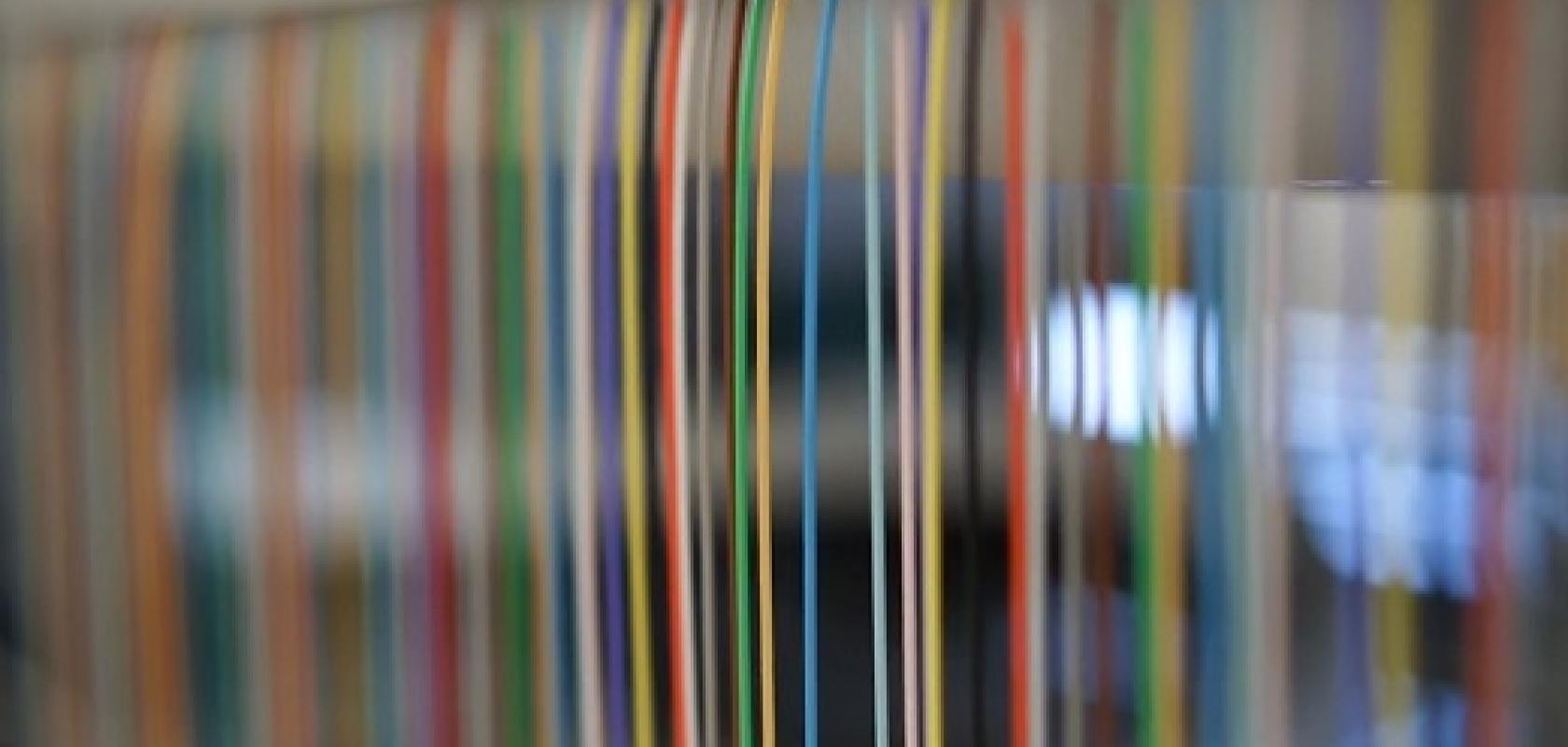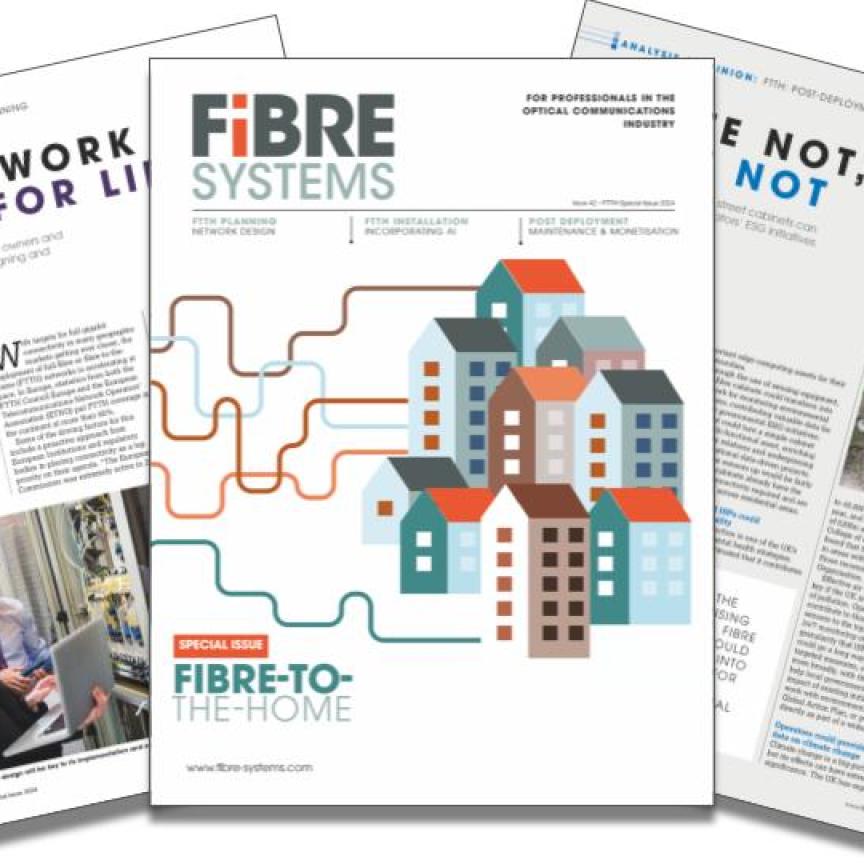As network speeds have exploded through 100G and 200G to beyond 400G to cope with increased bandwidth requirements, network operators are increasingly focusing on automation – typically via software defined networking (SDN) or network function virtualisation (NFV) – to increase service velocity and remove cost and errors from their networks. However, one layer – the physical layer has stubbornly resisted the move to software definition or automation.
When it comes to optical distribution frames and meet-me rooms, actions to re-architect the physical network take place in a patch room where an engineer manually interlinks the spans to create the required topology. This allows new connections to be added, old connections to be removed and new services to be created. The process is manual and therefore opex-heavy, slow and out of step with the progress being made in all other areas of the network. It is also prone to error and can even impact adjacent services through the disturbance of patch cords.
Automation to date
The demand to extend automation with remotely reconfigurable physical connectivity is growing and large-scale fibre cross-connect is the key enabler to such a layer ‘0’ revolution. Many optical switching technologies have been proposed, demonstrated and commercialised, including 2D and 3D MEMS optical switches, thermo-optical switches, liquid crystal optical switches, mechanical beam steering optical switches and robotic optical switches. 2D MEMS, thermos-optical, and liquid crystal based optical switching each have scalability constraints with port count limited to 32x32 for reasonable switch insertion loss, but there are other technologies that can yield large portcount optical switches.
For example, some operators have deployed 3D MEMS optical switches. These use two-dimensional MEMS mirror arrays to steer optical beams in free space and provide a level of network automation at a purely optical layer. There are some constraints limiting the port-count and optical loss performance of a 3D MEMS optical switch. An optimised design for a dual mirror configuration today can achieve an optical switch with a maximum port count of about 400, and a nominal optical loss of about 1.5dB. The optical losses of different connections in a 3D MEMS optical switch are intrinsically different. Consequently, 3D MEMS optical switches usually have a relatively large insertion loss spread, and a maximum loss up to 3~4dB.
Scaling up the port-count of a single 3D MEMS optical switch is a big challenge. The larger switch requires more MEMS mirrors, which means longer connection path lengths and consequently larger collimated beams. It also necessitates larger mirrors to avoid clipping loss, all leading to more silicon real estate.
Unfortunately, the lithography reticle size sets the hard wall limit. Using the multi-stage CLOS architecture, larger port-count switches can, in fact, be built using multiple 3D MEMS optical switches. But the total optical loss quickly becomes unbearable for many applications.

A further drawback of these switches is that connections are not locked, making them unsuitable for mission-critical applications.
Another optical switching technology with some commercial success is direct collimator steering. A direct light path between the input fibre and the output fibre is set without clipping loss using reflecting mirrors with limited apertures for beam steering. With proper fibre collimator design, low insertion loss of ~0.4dB can be achieved. Similar to 3D MEMS optical switches, however, the insertion loss variation still exists across different connections. Non-uniformity of the fibre collimators also widens the loss spread and commercial switches using direct beam steering are specified with a 1.2dB typical loss and a 2.2dB maximum loss.
Switching can be relatively fast at ~20ms. Similar to MEMS optical switches, there is no locking mechanism for the established connections, hence this approach is not disaster-proof. Fibre-to-fibre coupling using direct beam steering can support both single and multimode fibre in theory. However, the loss of MMF switches is typically higher, and the switch port-count is smaller than for SMF switches.
Silicon photonics
Looking to the future, recent progress in silicon photonics technology is creating new opportunities for fast optical circuit switching.
Fast silicon photonic switches have been demonstrated with microsecond, even nanosecond switching times. Unfortunately, accumulated losses limit the port count of these switches (≤8×8). Combining MEMS actuated vertical adiabatic couplers as switching elements, in conjunction with a 2D silicon waveguide matrix, a scalable silicon photonic waveguide optical switch can be made that overcomes the accumulative losses. Switches larger than 100×100 are theoretically possible and a 50×50 silicon photonic switch, monolithically integrated on a 7.6×7.6mm2 chip has been successfully demonstrated with an on-chip insertion loss of 8.5dB. As the ultra-compact MEMS actuator only needs to make a digital movement of less than 1um in range, an impressive sub-microsecond switching time was achieved. Although promising in many aspects, a couple of practical challenges still exist for digital silicon photonic MEMS switching. Due to large mode size mismatch between the fibre and the silicon waveguides, low loss coupling between the fibres and the silicon chip is still a problem area, especially where tens or even hundreds of fibres are involved. In addition, silicon photonic MEMS switches with polarisation diversity are yet to be demonstrated.

Robotic optical networking
This networking is a way to physically change the connectivity of a network, without undue impairment of its optical characteristics. Robotic optical switches are being used and developed to make large cross-connect fabrics with low insertion losses and robust connections. The key to their effectiveness has been the development of a matrix design with cross-bar switching that avoids fibre entangling. The robots can pick up the connector pair and make a connection within 20 seconds.
As every connection in a robotic switch is made using LC connector-like mating, low optical loss is achieved independently of the switching path. The lowest optical insertion loss recorded so far was an average of 0.17dB, with a standard deviation of only 0.07dB. In addition, it is possible to scale up the switches to support 16K duplex ports with less than 1dB optical loss. A fibre cloud with half a million duplex ports can be supported with <1.5dB optical loss.
With LC ferrules, the same design works for both single and multimode fibres. Robots are shared among hundreds of fibre ports, hence the cost of the switch can be relatively low and once a connection is made by the robots, the connectors are locked on the metal matrix passively, resulting in extremely secure and reliable optical connections, even under extreme conditions.
A major driver in a modern network is to increase service velocity; it addresses the on-demand nature of many requested services and accelerates time to revenue and increases customer satisfaction. The ability to automate physical connectivity in fibre networks could not only prevent patching from holding up on-demand services, but also allow on-demand services to be delivered more cost effectively.
Duncan Ellis is director, EMEA at Wave2Wave Solution


